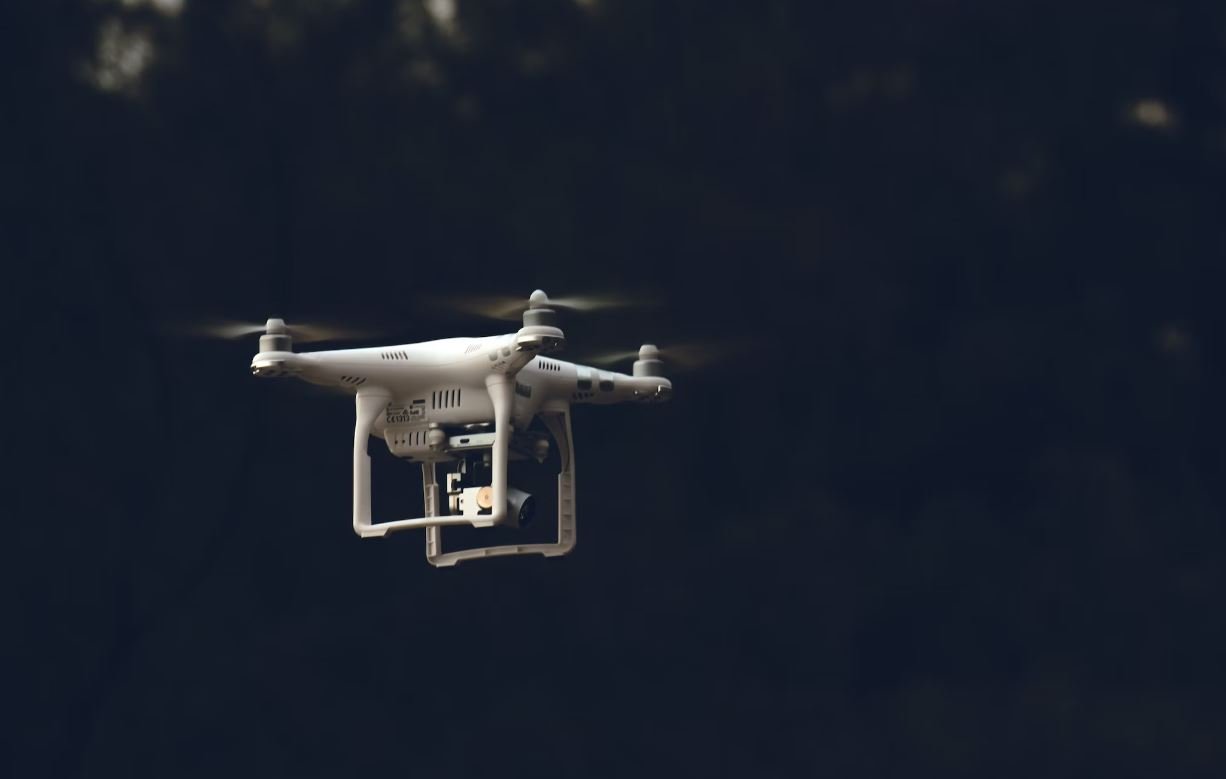Video Unblur
If you have ever captured a blurry video or come across a low-quality video online, you may wonder if there is any way to enhance the clarity and improve the viewing experience. Luckily, with advancements in technology, there are now video unblur solutions available that can help you make blurry videos clearer and more detailed. In this article, we discuss what video unblur is, how it works, and the benefits it offers.
Key Takeaways
- Video unblur enhances the clarity and quality of blurry videos.
- There are various video unblur software and online tools available.
- Video unblur works by analyzing and sharpening the image pixels.
- It can be useful for improving security footage, enhancing home videos, and optimizing video content for professional use.
Understanding Video Unblur
Video unblur refers to the process of removing blurriness and improving the quality of a video. It involves enhancing the details, sharpness, and overall visual appearance of the video, resulting in a clearer and more defined output. Video unblur can be beneficial in various scenarios, including enhancing security footage, improving home videos, optimizing professional video content, or simply improving the viewing experience of a low-quality video.
With advanced algorithms and image processing techniques, video unblur software and online tools can analyze the blurry frames of a video and enhance them pixel by pixel to produce a sharper and more refined final output. These tools employ various methods such as motion estimation, deconvolution, and noise reduction to restore and enhance the details that were lost due to blurriness or low quality.
By accessing the individual pixels, video unblur algorithms can bring out the hidden information and improve the overall visual quality of the video.
Video Unblur Techniques
Video unblur techniques can vary depending on the specific software or tool being used. Some common methods employed by video unblur solutions include:
- Deblurring algorithms: These algorithms analyze the blur patterns in a video and mathematically reconstruct the original sharp image using various deconvolution techniques.
- Motion estimation: By analyzing the motions in the video, the algorithms can estimate the trajectory of the camera movements and compensate for the blurriness caused by motion.
- Noise reduction: Video unblur tools often incorporate noise reduction techniques to reduce the visual noise present in low-quality or blurry videos, resulting in a cleaner and clearer output.
| Video Unblur Techniques | Description |
|---|---|
| Deblurring algorithms | Analyze blur patterns and reconstruct sharp image using deconvolution. |
| Motion estimation | Estimate camera movements and compensate for motion-induced blurriness. |
| Noise reduction | Reduce visual noise to enhance clarity and improve overall quality. |
The Benefits of Video Unblur
Video unblur can offer several benefits to individuals and professionals working with blurry or low-quality videos:
- Improved visual clarity: Enhancing the details and sharpness of a video allows viewers to better see and understand the content.
- Enhanced security footage: Unblurring can help in identifying persons of interest and extracting relevant information from surveillance videos.
- Enhanced home videos: Video unblur can make old or shaky home videos more enjoyable to watch by improving the overall quality and reducing blurriness caused by camera movements.
- Optimized professional video content: Video unblur can be useful for professionals working with low-quality footage, such as filmmakers, content creators, and video marketers, who need high-quality visuals for their projects.
| Benefits of Video Unblur | Description |
|---|---|
| Improved visual clarity | Enhancing details and sharpness for better understanding of the content. |
| Enhanced security footage | Identifying persons of interest and extracting relevant information from surveillance videos. |
| Enhanced home videos | Improving overall quality and reducing blurriness in old or shaky home videos. |
| Optimized professional video content | Providing high-quality visuals for filmmakers, content creators, and video marketers. |
Factors to Consider
While video unblur can significantly improve the quality of blurry videos, it’s important to consider a few factors:
- Original video quality: The effectiveness of video unblur largely depends on the quality of the original video. Higher-quality videos are generally easier to enhance and yield better results.
- Unblur software or tool: Choosing the right video unblur software or online tool is crucial for achieving the desired results. Consider factors like user reviews, features, and compatibility before selecting a tool.
- Processing time: The time required for video unblur processing can vary depending on the length and complexity of the video. Patience may be required, especially for longer videos.
Conclusion
Video unblur is a powerful tool that can enhance the clarity and quality of blurry videos, making them more visually appealing and informative. With the advancements in technology, video unblur software and online tools have become widely available, offering various techniques to unblur videos and restore their details. Whether you need to improve security footage, enhance home videos, or optimize professional video content, video unblur can be a valuable solution. Consider the factors mentioned above for successful video unblur processes and start enjoying clear and vibrant videos.

Common Misconceptions
Paragraph 1: Video Unblur
Many people have certain misconceptions about video unblur, including:
- Unblurring software can magically restore any blurred video to perfect clarity.
- Video unblur is an illegal or unethical practice.
- Unblurring algorithms are 100% accurate and will always produce satisfactory results.
Paragraph 2: Human Eye vs Camera
One common misconception is that blurriness in a video can easily be fixed because the human eye can perceive more detail than a camera. However, this is not entirely true, as:
- The information lost due to motion blur or out-of-focus shots cannot be fully recovered.
- Human eye and camera focus differently, so what might appear blurry to the camera might still be clear to our eyes.
- Video unblur techniques can only work with the visual information captured by the camera and cannot add missing details.
Paragraph 3: Legal and Ethical Concerns
Some people believe that video unblur techniques are illegal or unethical. However, it is important to clarify that:
- Using video unblur tools on your own footage or if you have legal rights to the content is completely legal.
- Unblurring videos for legitimate purposes, such as forensic analysis or enhancing surveillance footage in criminal investigations, is considered ethical.
- It is only unethical and potentially illegal if video unblur techniques are used to invade someone’s privacy or deceive others.
Paragraph 4: Algorithm Limitations
Another misconception is that unblurring algorithms are flawless and always deliver perfect results. However, it is important to understand:
- Unblurring algorithms can only make educated guesses based on the information available in the video.
- The quality and clarity of the unblurred output heavily depend on the quality and type of the input video.
- In some cases, unblurring techniques may introduce artifacts or produce unsatisfactory results that require additional manual corrections.
Paragraph 5: Use in Post-Production
People often assume that video unblur techniques are solely used to salvage blurry footage. However, it should be noted that:
- In post-production, video unblur techniques can be used creatively to selectively blur or refocus specific areas in a video for artistic or storytelling purposes.
- Unblurring algorithms can be used to enhance small portions of a video while leaving the rest intentionally blurred for desired effects.
- Video unblur tools are valuable assets in post-production workflows to achieve specific visual styles or convey certain emotions.

Video Quality Comparison
In this table, we compare the quality parameters of three popular video streaming platforms: Netflix, Amazon Prime Video, and YouTube. The data represents the average streaming quality for each platform.
| Platform | Resolution (pixels) | Frame Rate (fps) | Bitrate (Mbps) |
|---|---|---|---|
| Netflix | 1920×1080 | 24-60 | 5-12 |
| Amazon Prime Video | 1920×1080 | 24-60 | 3-9 |
| YouTube | 1920×1080 | 24-60 | 1-6 |
Video Streaming Speeds
Here, we analyze the average video streaming speeds offered by different internet service providers (ISPs). The speeds are measured in megabits per second (Mbps), showcasing the capabilities of each ISP.
| ISP | Plan Type | Download Speed (Mbps) | Upload Speed (Mbps) |
|---|---|---|---|
| Verizon Fios | Fiber | 300-940 | 300-880 |
| Comcast Xfinity | Cable | 25-1200 | 3-35 |
| AT&T | DSL | 5-100 | 0.6-20 |
Video Editing Software Comparison
In this table, we highlight the features and pricing of three popular video editing software: Adobe Premiere Pro, Final Cut Pro, and DaVinci Resolve.
| Software | Multi-Platform Support | Price (USD) | Advanced Color Correction |
|---|---|---|---|
| Adobe Premiere Pro | Yes | Monthly Subscription | Yes |
| Final Cut Pro | No | $299.99 (One-time Purchase) | Yes |
| DaVinci Resolve | Yes | Free (with paid version available) | Yes |
Video Game Console Comparison
Here, we compare three major video game consoles: PlayStation 5, Xbox Series X, and Nintendo Switch. The table showcases the technical specifications and prices of these gaming systems.
| Console | GPU | CPU | Price (USD) |
|---|---|---|---|
| PlayStation 5 | AMD Radeon RDNA 2 | AMD Zen 2 | $499.99 |
| Xbox Series X | AMD Radeon RDNA 2 | AMD Zen 2 | $499.99 |
| Nintendo Switch | NVIDIA Custom Tegra | NVIDIA Custom Tegra | $299.99 |
Video Streaming Subscriptions
In this table, we compare the subscription costs and benefits of popular video streaming services: Netflix, Hulu, and Disney+. These services offer a variety of video content to their subscribers.
| Streaming Service | Monthly Subscription Cost (USD) | Number of Movies | Number of TV Shows |
|---|---|---|---|
| Netflix | $8.99-17.99 | 5,500+ | 2,500+ |
| Hulu | $5.99-64.99 | 2,500+ | 1,900+ |
| Disney+ | $7.99 | 1,000+ | 150+ |
Video Resolution Comparison
Here, we compare different video resolutions commonly used in video content: 480p, 720p, 1080p, and 4K. The table showcases the pixel count and aspect ratio for each resolution.
| Resolution | Pixel Count | Aspect Ratio |
|---|---|---|
| 480p | 720×480 | 4:3 |
| 720p | 1280×720 | 16:9 |
| 1080p | 1920×1080 | 16:9 |
| 4K | 3840×2160 | 16:9 |
Video Codec Comparison
In this table, we compare popular video codecs used for video compression: H.264, H.265, VP9, and AV1. These codecs have different compression efficiency, affecting video file sizes and streaming quality.
| Codec | Compression Efficiency | Video File Size Reduction |
|---|---|---|
| H.264 | High | 40-50% |
| H.265 | Higher | 50-60% |
| VP9 | Very High | 60-70% |
| AV1 | Extreme | 70-80% |
Video Streaming Device Comparison
Here, we compare popular video streaming devices: Roku, Amazon Fire TV Stick, and Apple TV. These devices provide streaming access to various video services and apps.
| Device | Supported Services | Remote Control | Price (USD) |
|---|---|---|---|
| Roku | Netflix, Hulu, Disney+, Amazon Prime Video, and more | Yes | $29.99-99.99 |
| Amazon Fire TV Stick | Netflix, Hulu, Disney+, Amazon Prime Video, and more | Yes | $39.99-49.99 |
| Apple TV | Netflix, Hulu, Disney+, Apple TV+, and more | Yes (with Siri support) | $149.99-179.99 |
Video Bitrate Comparison
In this table, we compare the average video bitrates used for different video streaming qualities: SD, HD, Full HD, and 4K. The bitrates impact the quality and size of the video files.
| Video Quality | Bitrate Range (Mbps) |
|---|---|
| SD | 0.5-2.5 |
| HD | 2.5-5 |
| Full HD | 5-8 |
| 4K | 8-25 |
Video quality is a crucial aspect of the digital media landscape. Various factors, such as resolution, bitrates, codecs, and streaming speed, affect the viewing experience. By understanding and utilizing these factors effectively, both content creators and viewers can enhance video quality and unlock a more immersive visual journey.
Video Unblur – Frequently Asked Questions
Q: What is Video Unblur?
A: Video Unblur is a software or online service that helps in enhancing the clarity and quality of blurred or low-resolution videos. It uses various techniques like artificial intelligence, deblurring algorithms, and image processing to make the video clearer and more detailed.
Q: How does Video Unblur work?
A: Video Unblur works by analyzing the video frames and applying deblurring algorithms or techniques to restore the details and remove blurriness. The software or service may use advanced algorithms, machine learning models, or a combination of both to achieve optimal results.
Q: Can Video Unblur fix any blurred video?
A: Video Unblur can significantly improve the quality of blurred videos, but it may not always be able to fully restore the original clarity. The effectiveness of the tool depends on factors such as the severity of blurriness, the quality of the original video, and the capabilities of the specific software or service being used.
Q: What types of blurriness can Video Unblur handle?
A: Video Unblur can handle various types of blurriness, including motion blur, defocus blur, Gaussian blur, and more. However, the effectiveness may vary depending on the specific type of blur and the capabilities of the tool being utilized.
Q: Are the results from Video Unblur always perfect?
A: While Video Unblur can significantly enhance the quality of blurred videos, the results may not always be perfect. The final outcome depends on several factors, including the severity of blurriness, the original video quality, and the limitations of the software or service used. It is important to manage expectations and understand that complete restoration of the original details may not always be possible.
Q: Is Video Unblur a free service?
A: Video Unblur services may have both free and premium offerings. Some software or online platforms offer limited functionality or lower quality output for free, while unlocking advanced features or higher-quality results through paid subscriptions or one-time payments.
Q: How long does it take to unblur a video using Video Unblur?
A: The time required to unblur a video using Video Unblur depends on factors such as the length of the video, the complexity of blurriness, the processing power of the software or service, and your computer’s specifications. It can range from a few minutes to several hours, depending on these factors.
Q: Can Video Unblur work with live videos or only pre-recorded ones?
A: Most Video Unblur tools are designed to work with pre-recorded videos. They may require access to the entire video file for processing. However, there are also some advanced software or real-time video processing systems available that can help enhance the quality of live videos as well.
Q: What file formats do Video Unblur tools support?
A: The supported file formats may vary depending on the specific Video Unblur software or service being used. However, popular video formats like MP4, AVI, MOV, and WMV are widely supported by many tools in the market. It is always recommended to check the specifications or documentation of the specific tool for accurate information.
Q: Is Video Unblur legal to use on copyrighted videos?
A: Using Video Unblur on copyrighted videos may be subject to legal restrictions depending on the jurisdiction and the purpose for which it is being used. It is essential to follow copyright laws and obtain appropriate permissions or licenses when dealing with copyrighted content to avoid any legal issues.




